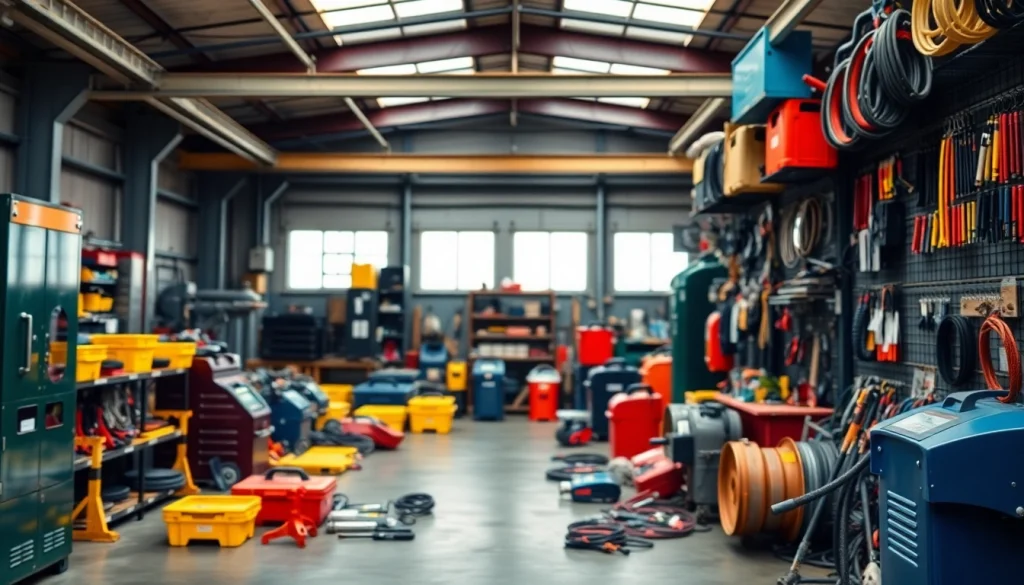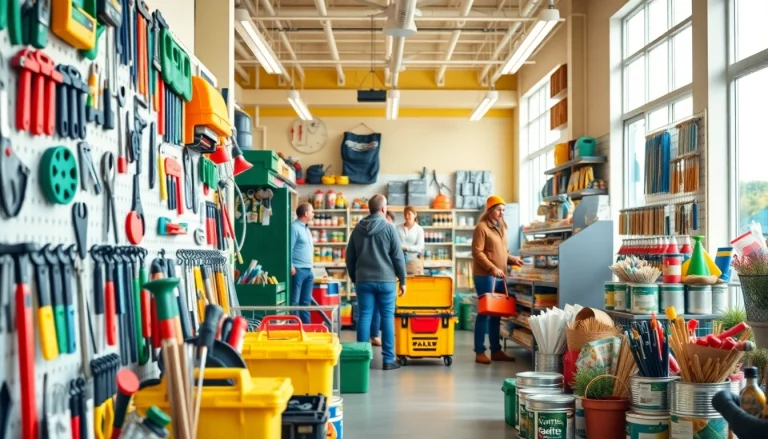
Understanding Welding Supplies
When embarking on any welding project, one of the most vital components for success lies in the quality of your welding supplies. The phrase “you get what you pay for” rings true in this industry, where subpar materials can lead to poor results, unsafe conditions, and costly mistakes.
The Importance of Quality Welding Supplies
Quality welding supplies play a pivotal role in ensuring safety and efficiency in welding operations. Not only do they contribute to the overall strength and durability of the welds, but they also significantly reduce the risk of accidents. High-quality tools and materials allow for better control, which is essential in producing consistent and high-quality welds that meet industry standards. Investing in reliable welding supplies is crucial whether you are a professional welder or a hobbyist.
Types of Welding Supplies
Welding supplies encompass a wide array of tools and materials, each tailored to specific tasks and techniques. Here are some of the most common types:
- Welding Machines: These include MIG, TIG, and stick welders, each suited for different jobs and materials.
- Welding Consumables: These are materials consumed during the welding process, such as electrodes, filler metals, and shielding gases.
- Protective Equipment: Helmets, gloves, jackets, and goggles to ensure safety while welding.
- Welding Accessories: Tools like clamps, nozzles, and cleaning supplies that support the welding process.
Common Myths About Welding Equipment
Misconceptions about welding equipment can lead to poor decisions. Here are a few myths debunked:
- Myth 1: All welding equipment is the same. Fact: Variations in machine type and quality greatly influence welding outcomes.
- Myth 2: You don’t need protective gear if you are experienced. Fact: Safety gear is crucial for preventing injuries regardless of experience.
- Myth 3: More expensive means better. Fact: While quality counts, the best equipment depends on your specific needs.
Key Tools for Welding Projects
Specific tools are indispensable in achieving superior welding results. Understanding their functions can help you to choose the right equipment for your projects.
Essential Welding Helmets and Gear
Safety should always be a priority in welding. A welding helmet is arguably the most critical piece of protective gear, designed to shield your face and eyes from extreme light, heat, and flying debris. Helmets come with various features, including auto-darkening lenses, which adjust the filter shade based on the intensity of the weld arc.
In addition to helmets, welding jackets and gloves are essential for protecting your skin from burns and sparks. Look for fire-resistant materials and designs that allow for ease of movement.
Top Welding Machines Explained
Understanding the various welding machines available is crucial for selecting the right one for your project:
- MIG Welders: Ideal for beginners, MIG welding uses a continuous wire feed and is suitable for projects involving thin to medium-thick materials.
- TIG Welders: More complex but precise, TIG welding is used for thinner materials and produces clean, high-quality welds.
- Stick Welders: These are versatile and can be used outdoors or on dirty surfaces but may produce more spatter compared to MIG or TIG.
Must-Have Welding Accessories
Accessories enhance the efficiency and quality of your welding. Here are some essential items:
- Chipping Hammers: Used to remove slag after welding.
- Welding Clamps: Secure metal pieces together before welding.
- Wire Brushes: Clean surfaces before the welding process to ensure a clean bond.
Welding Supplies for Different Techniques
Different welding techniques require specific materials and approaches. Understanding these nuances is critical for achieving the best results.
MIG, TIG, and Stick Welding Essentials
Each welding technique has its set of essential supplies:
- MIG Welding: Requires spool guns and shielding gases like argon or CO2.
- TIG Welding: Utilizes tungsten electrodes and requires specific filler rods for different metals.
- Stick Welding: Needs electrodes that must match the base material. Ensure to select the right type for optimal performance.
Choosing the Right Materials
Selecting the appropriate materials is key to successful welding. Consider the following:
- Type of metal (steel, aluminum, stainless steel, etc.)
- Thickness of the material
- Intent of the weld (whether for structural strength or aesthetic appearance)
Safety Equipment Specific to Techniques
Different welding techniques present unique hazards. Therefore, tailored safety measures are essential:
- While MIG and TIG welding often generate less spatter, appropriate face shields, gloves, and protective clothing are still necessary to protect against UV radiation and heat.
- In stick welding, the risk of flying sparks is higher, so full protective gear is essential.
Maintaining Your Welding Equipment
Proper maintenance of welding equipment ensures longevity and consistent performance. Here are some best practices.
Best Practices for Cleaning and Storage
Maintaining cleanliness in your workspace is vital. After use, clean your welding tools to remove slag, dirt, and grease. Store them in a dry, clean area to prevent rust and damage. Here are some specific practices:
- Use a soft cloth to wipe down your welding machine and remove dust.
- Store consumables in a moisture-free environment to preserve their integrity.
- Regularly inspect hoses and cables for signs of wear or damage.
Signs Your Welding Supplies Need Replacement
Knowing when to replace your supplies can prevent accidents and ensure quality:
- Electrodes should be replaced when they become too short to handle.
- If your welding helmet’s face shield is scratched or damaged, it’s time for a new one.
- Hoses showing cracks should be replaced immediately to prevent leaks.
Long-Term Care for Longevity
To maximize the life of your welding supplies:
- Follow the manufacturer’s recommendations for each piece of equipment.
- Regularly maintain and calibrate your welding machines.
- Keep an organized inventory to track supplies and usage effectively.
Where to Buy Quality Welding Supplies
The sourcing of your welding supplies impacts both efficiency and safety. Properly vetting suppliers is essential for a successful project.
Online vs. In-Store Purchases
Each purchasing option has its merits. Shopping online provides convenience and a wider selection, while in-store purchases allow for immediate acquisition and direct inspection of equipment. Weigh the benefits based on your project needs and preferences.
Identifying Reputable Suppliers
When seeking suppliers:
- Research customer reviews and ratings.
- Check for product certifications to ensure quality.
- Inquire about return policies and customer support options.
Discounts and Special Offers for Welding Supplies
Many suppliers often run promotions. Sign up for newsletters, follow suppliers on social media, or join industry associations to stay informed about discounts. Shopping during off-seasons can also lead to significant savings. Look out for bulk purchase options that might save you additional cost.





